A fear of the ocean and restricted coastlines once prevented people from heading to the beach, but a group of surfers are turning the tide on this subtropical island.
I’ve become accustomed to the quizzical stares of passersby in their rolled-up jeans, holding umbrellas to shield themselves from the sun. They turn to gawk at me, because I’m wearing a bikini, because I’m hosing down a longboard more than twice my height. The sun is beaming. The waves are lapping. Peddlers are selling stinky tofu. It’s a perfect beach day.
From Yilan County in the northeast down to the picturesque Hengchun Peninsula in Pingtung County on Taiwan’s southernmost tip, the east coast of this subtropical island has Southern California weather, black sand beaches, and beckoning swells.
But it’s far from being a surfer’s paradise. When two million Kuomintang—or Chinese Nationalists—fled to Taiwan after losing the Chinese Civil War to Mao Zedong’s Communists in 1949, they established martial law. Until 1987, civilians were prohibited from accessing the beaches as the coast was sealed off for military drills. Today, huge areas of Taiwan’s pristine Pacific coastline still lack basic beach amenities. Even a hose with running water is a sign of progress: in 2000, when my family first moved here, it was essential to bring water bottles for drinking and rinsing off. Children grew up fearing the beach instead of playing in the water, taught that the ocean was dangerous and haunted. Moreover, learning to swim wasn’t compulsory in the Taiwanese education system, and still isn’t.
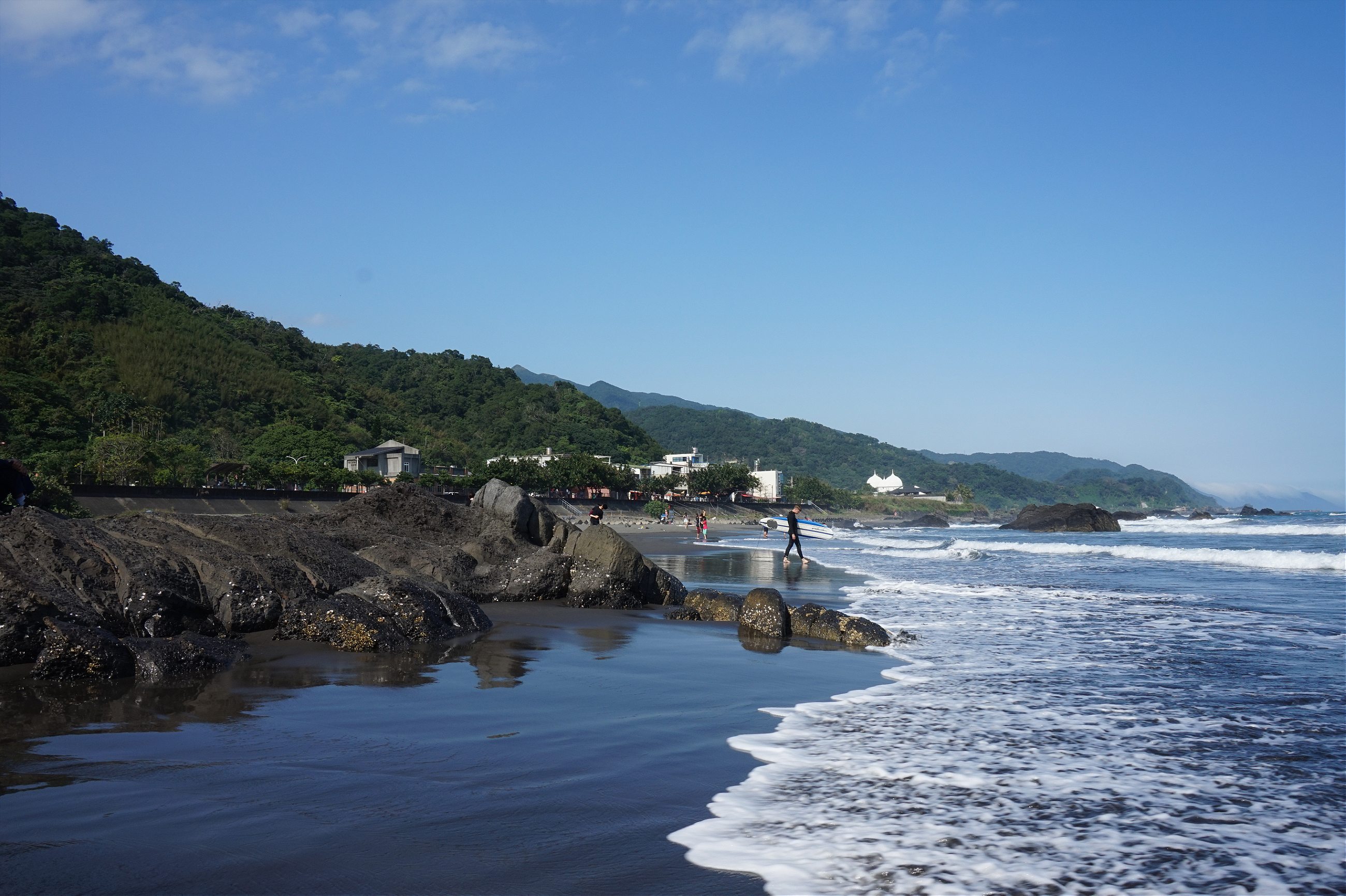
Surfing was introduced to the island in the 1960s by American soldiers, and in 1980, Jeff Sun, the pioneer of Taiwanese surfing, opened the first surf shop in the northeastern town of Daxi. By the late 1980s, Taiwan was in a period of rapid economic growth and was transitioning into a multi-party democracy. Its tech, health, and science industries were now on par with other developed countries and the underground arts and music scene which took root in university bars during the final years of martial law was able to flourish in the 1990s.
Yet in 2015, surfing remains a nascent countercultural movement. When it comes to education on basic water safety and knowledge about the ocean, there’s much catching up to do with places like Hawaii, California, and Australia, which have a long history of surfing. There are few lifeguards on Taiwan’s beaches, let alone signage containing information about water currents, wind directions or swell size. Since moving back to Taiwan last year, I’ve been surfing every few weeks, trying to remember what I learned in Hawaii a decade ago. When I ask shop owners where I can rent a board, they look at me as if I’ve completely lost it.
“Tai wei xian!” they warn me – too dangerous!
“Pai zhao jiu hao.” Just take pictures instead.
They try to deter me from venturing out to sea by offering to sell me selfie sticks.
My surfer friends laugh when I relate these conversations. “To a lot of Taiwanese, it’s crazy for girls to surf,” says Chris Hsia, who runs Summerpoint Bed & Breakfast in Jialeshui, an increasingly popular surf spot among gung-ho local and expat surfers in Pingtung County. When I visit Jialeshui (which means “happy water” in Chinese) in winter, the beach is deserted except for a few die-hard surfers in wetsuits. I’m told that there are more tourists during the summer.
Even this smattering of surfers is a change. Hsia recalls the time soldiers armed with M-16s chased away his family for camping too close to the beach at Kenting National Park when he was a child. Hsia, who trained as a lifeguard while in college, had to trek all the way to the north of the island to buy his first surfboard, since there were no surf shops in Pingtung County. “It took us a long time to receive surf culture from outside,” Hsia says, referring to American surf movies and magazines. “We had to watch the movies without Chinese subtitles.”
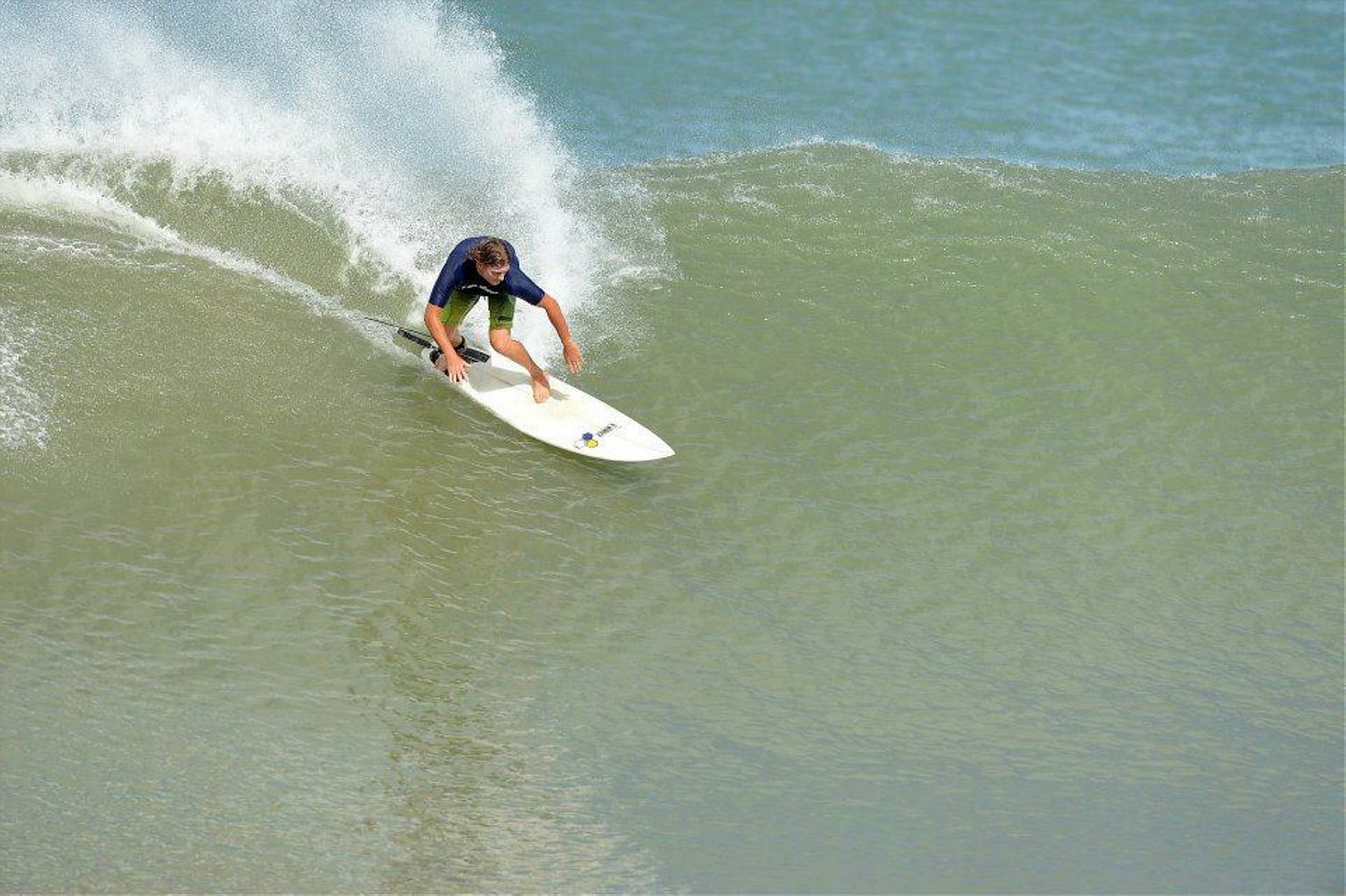
While ample surf shops now dot the rocky stretch of beach at places like Jialeshui, many coast guards can’t swim and lifeguards are not properly trained. Visitors from all over Taiwan come wanting to learn how to hang ten while barely knowing how to tread water. A handful of tourists drown each year as a result.
Hsia thinks it’s tragic and ridiculous that people don’t know how to swim. “We live on a fucking island!” he exclaims.
When I surf with two Canadian surfers in Jialeshui, they say this is slowly changing. Terry Meysen and Asif Hirji, who have lived in Taiwan since the late 1990s, run Island Rhythm Tours in Manchou, northeast of Jialeshui. They try to tell me about katabatic winds and different types of swells as I struggle to remember which foot to put in front of the other when I stand up on my longboard.
Hirji says that—unlike in big cities like Taipei in the north, where children’s lives revolve around cram schools—there’s more of an “outdoor culture” developing in southern Taiwan. “It’s becoming more acceptable to sit outdoors and tan when the weather is lovely.”
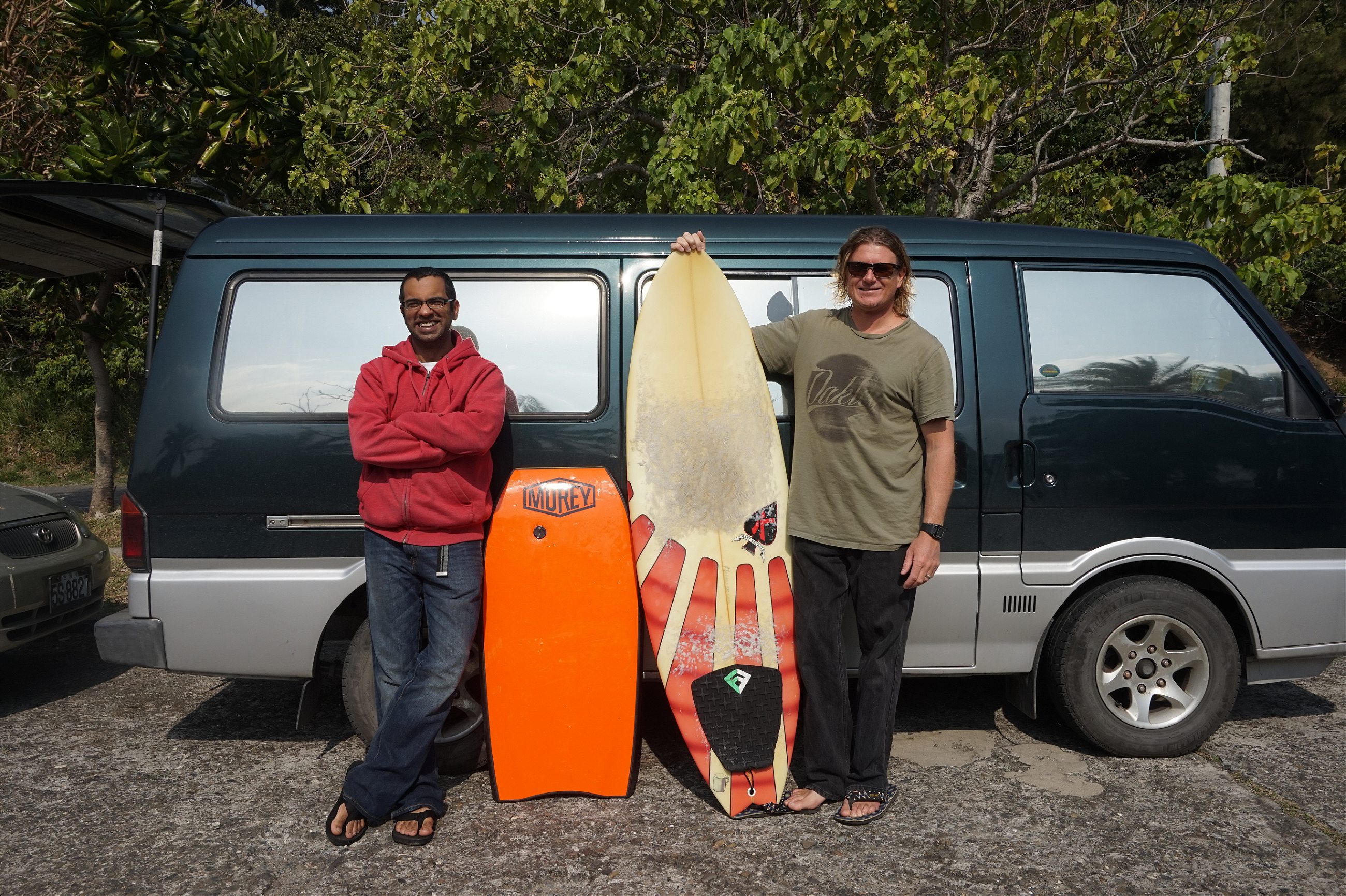
Meysen agrees. “Young people from the cities move to Kenting to live the life,” he says. “They sell stuff at night markets during night time, which means they have the entire day to surf.” Meysen and Hirji attribute this carefree mentality to a burgeoning youth culture. Young Taiwanese in their twenties grew up in a democracy and experienced more freedom than their parents did under martial law. To some, this means ignoring superstitions about the beach being a dangerous place and learning how to swim or—gasp!—surf.
Further up the Pacific Coast on Highway 11 in Taitung County lies another beach town that is also in a state of flux. When I visit Dulan in March, the shops are deserted and the cafés are barely serving food. Dulan might be much smaller than Kenting, but this tiny bohemian community composed of artists and musicians from all corners of the world is also experiencing the beginnings of a surf rush.
Life in Dulan revolves around the Sugar Factory, an abandoned cluster of warehouses revamped into a live music venue in the early 2000s. Local aboriginal musicians jam with hipster Taiwanese and hippie expats, creating music that syncs with the sounds of lapping waves. Their music factory looks like it was airlifted from Brooklyn, plopped onto the beach, then splattered with Polynesian colors.
Drum sets and keyboards are scattered all around. Paintings of sunsets and palm trees hang against a chalkboard next to a communal working space where musicians brew coffee and eat locally grown tomatoes. A few blocks away from the Sugar Factory, Talaluki, an aboriginal musician from the Amis tribe, makes his own guitars from driftwood he collects from the ocean.
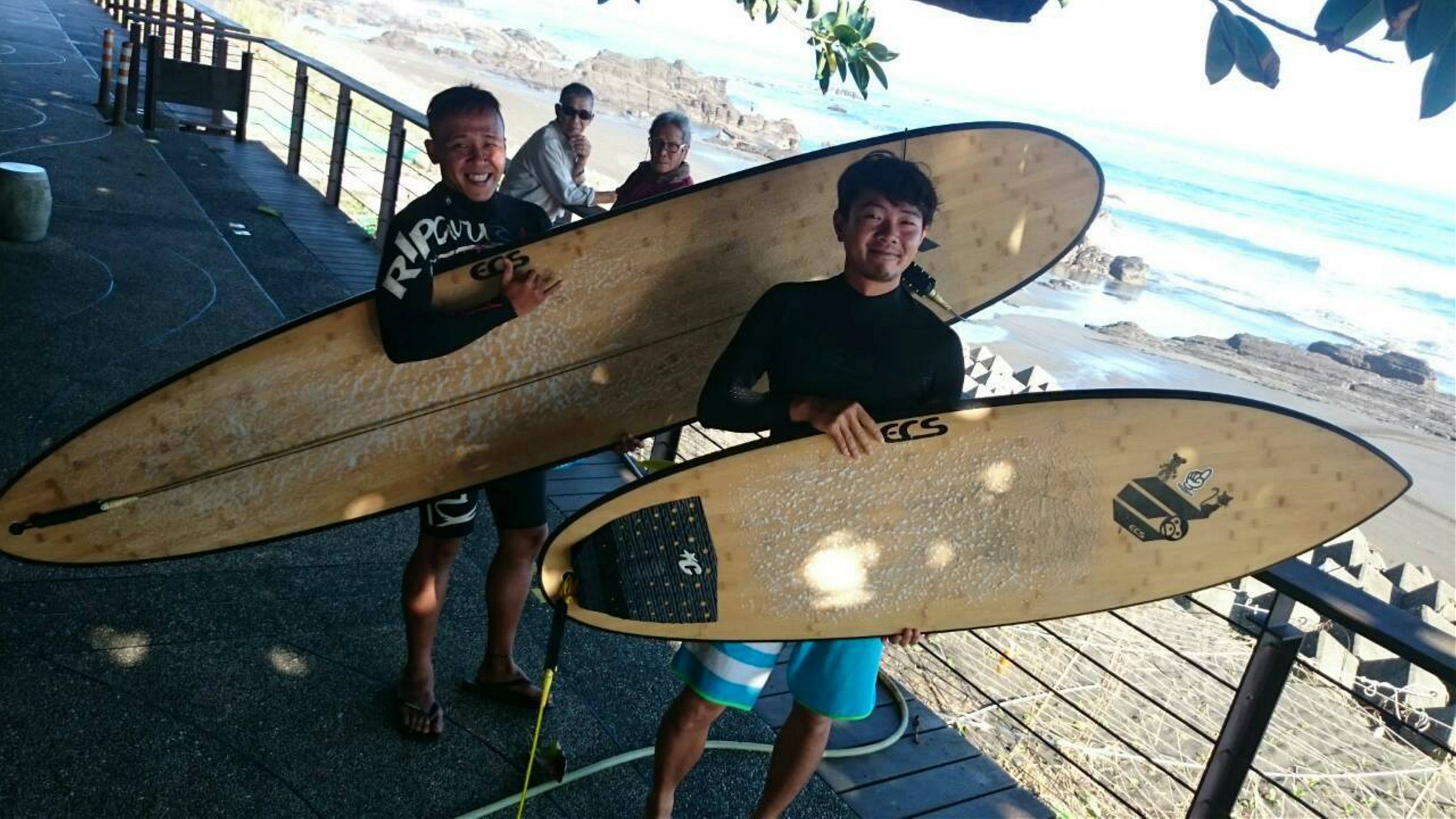
Across the street from the Sugar Factory is the Wagaligong surf hostel. Backpackers and surfers from all over the world congregate here to strum guitars and bond over cheap Taiwan Beer as they sit outdoors on maroon-colored couches. Wagaligong (which means “let me tell you” in the Taiwanese dialect) is run by two South Africans who have been living in Taiwan for over a decade.
One of them, Mark Jackson, who also plays guitar and produces films, takes me out to the beach and starts building a model out of black sand to illustrate different types of breaks and waves. Jackson says other instructors only teach tourists how to stand up on a board and ride a wave back to shore so that they can return to Taipei feeling satisfied that they’ve surfed. “The shitty thing that surfing has done is that instead of creating a beach culture first and a surf culture second, surf culture has come before there’s a beach culture.”
For Jackson, “beach culture” means taking your children to the beach for family outings on weekends, teaching children not to litter and to stay away from rocks when the waves are too big. “These kids have the pants and the board,” Jackson says, referring to young surfers. “They see surfing as a cool thing but they’ve never built a sandcastle.” This love for the environment, along with an appreciation and understanding of how the ocean works, needs to be ingrained from a young age for the beach to be a safe environment for everyone.
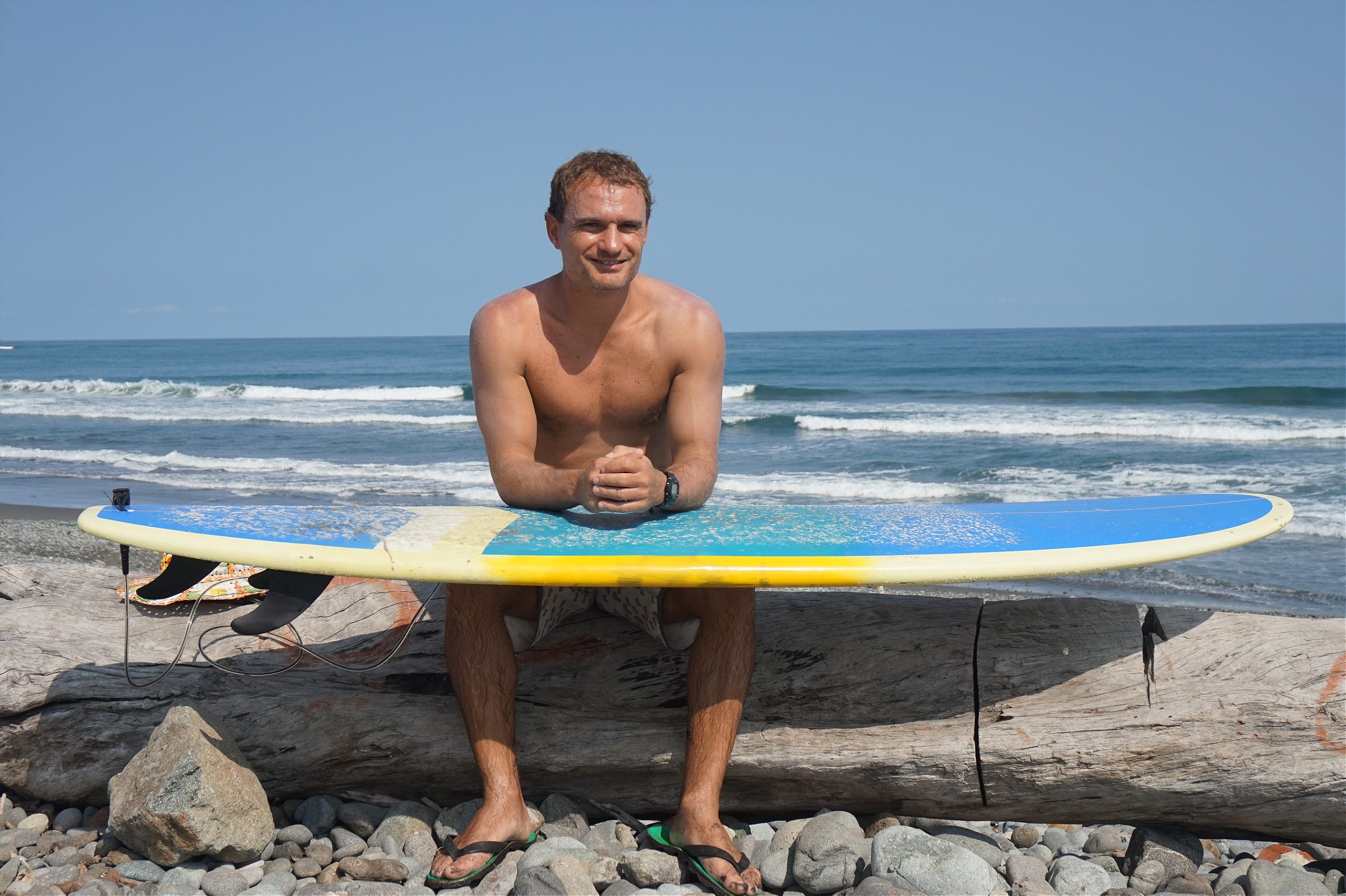
But Jackson is optimistic. Children are starting to play by the sand while the adults are out surfing. Thinking of his three-year-old daughter, he says, “They will grow up with beach culture even though their parents might have just been in it for the fashion.”
Up north at Yilan County’s Wai’ao Beach, there’s a small group of surfers seeking to remedy these issues. Like Wagaligong, Rising Sun Surf Inn is the type of place that attracts wandering souls. Guys in board shorts and girls in bikinis come and go as they please, stopping by to chat with friends on comfy couches adorned with red, orange, and yellow pillows. They drink locally brewed IPAs and Chinese tea, listen to Led Zeppelin on the stereo, then zip up their wetsuits, grab their boards, and hop back in the ocean.
On the deck overlooking the rocky coastline and crashing waves, more surfers—a mix of Taiwanese and expats—enjoy hamburgers and soup next to a row of foul-smelling Chinese cabbage that the neighbors have left out to dry.
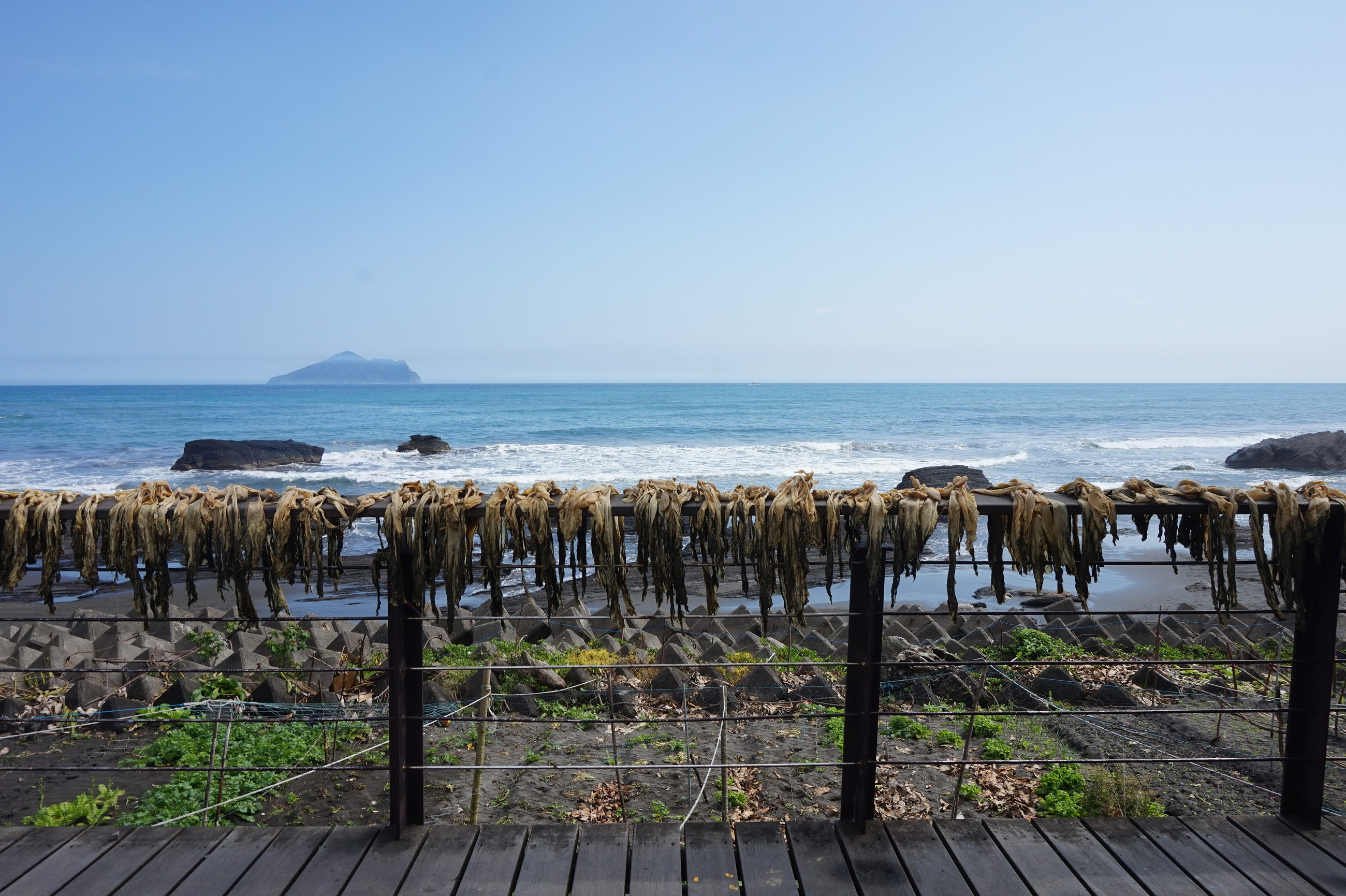
Despite his laid back facade—he plays the drums on his nights off in an abandoned building with other surfers—the owner of Rising Sun, Garrett Ball, is heavily involved in an ongoing effort to achieve sustainable development along Taiwan’s east coast. In addition to organizing regular beach clean-ups with other surfers, Ball has also been campaigning for the Surfrider Foundation to open a new chapter in Taiwan. The non-profit organization, which was founded in 1984 in Malibu, California, aims to protect the world’s beaches through logistical support and equipment for their overseas branches.
“I grew up at a beach in California and it was only natural to use it as my playground,” Ball says. He wants to turn Wai’ao into an international surfing destination while supporting local businesses, improving the environment, and implementing lifesaving programs.
Another surfer often found at Rising Sun is Paul Tu. An aboriginal from the Atayal tribe, Tu says that the Taiwanese government is “not really promoting beach activities.” Tu, who runs Atayal Xiang Gen Bed & Breakfast in nearby Jiaoxi, notes that tourism is increasing in Yilan County, but he hopes that the government will be able to boost it effectively by augmenting the coast’s natural beauty rather than urbanizing it. “We don’t want beautiful, peaceful Yilan to be destroyed by crowds and traffic.” What needs to happen, he adds, is more encouragement from the government for water sport businesses and athletes.

One of these athletes is international surfer Anita Vischka, who is sponsored by Roxy Taiwan. Vischka, who has surfed regularly in Taiwan for the last three years, can be seen catching the biggest breaks alongside Wai’ao’s surfer boys when she’s not chilling on the deck outside of Rising Sun. “There are not many female surfers to begin with in Taiwan,” Vischka explains. “So you know that a lot of people are looking at you and have high expectations.”
Having surfed the world, Vischka believes that there’s plenty of potential for Wai’ao. She cites Sydney’s Bondi Beach rescue guards as an example of the level of professional training that Taiwan’s lifeguards should undergo. “We also need proper beach rescue equipment, including jet skis.” Vischka mentions that in Trestles, California, signs display information on how currents move and which areas of the ocean are suitable for different types of boards and skill levels. “I think it’s a great idea to put a map like this at the beach.”
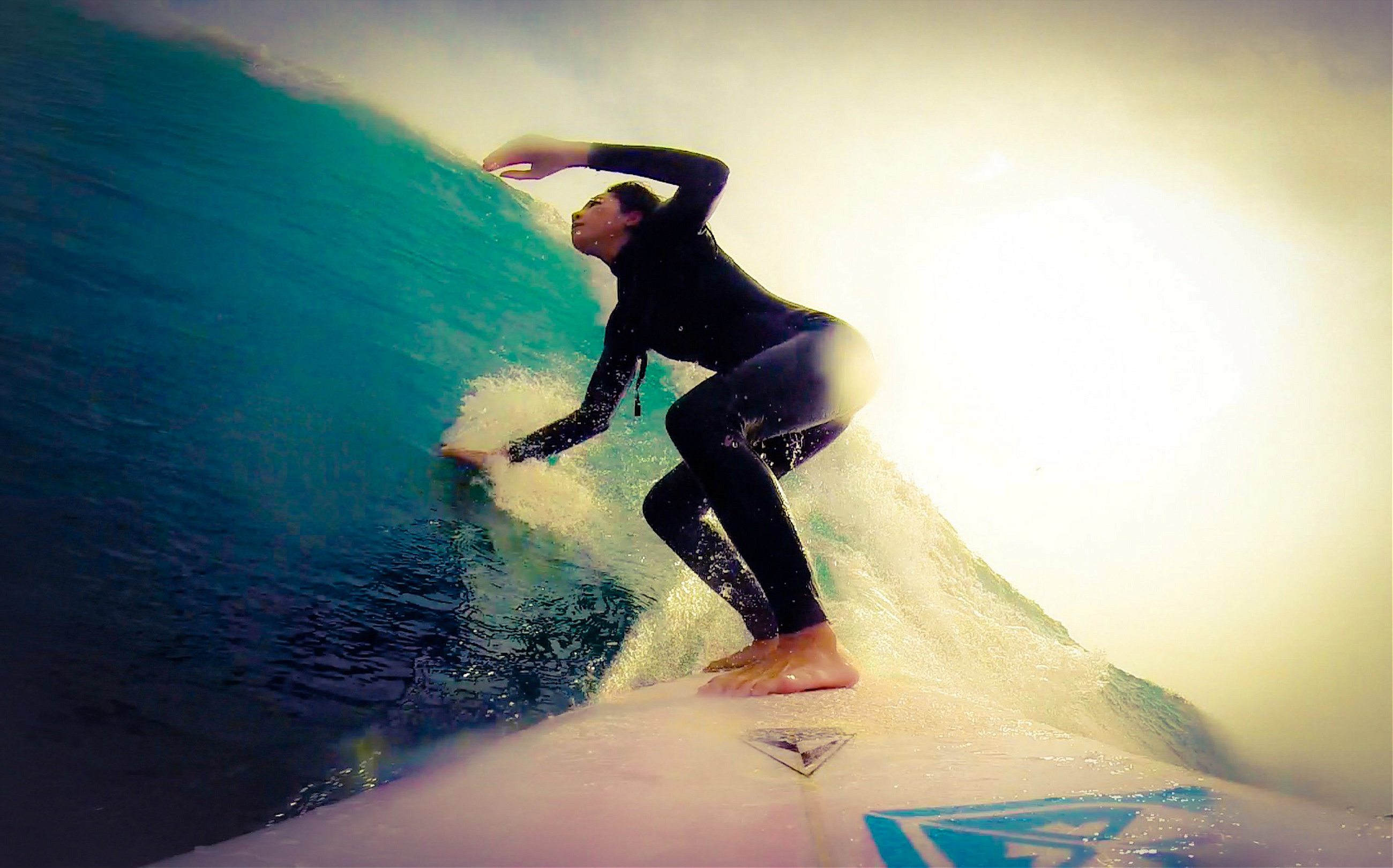
Like other surfers, Vischka hopes that attitudes towards the ocean will change and that the government will learn the importance of creating a safe environment for beachgoers. She updates her Facebook fan page regularly in both English and Chinese, and it’s through her pictures that fans are able to learn more about Wai’ao and surfing – and even a little about beach fashion.
It’s an exciting time to be hanging ten in Taiwan. Surfers are trying to bring about real change. Social norms are shifting. Stereotypes are shattering. And what’s better than being a rebel with a killer tan and a surfboard?